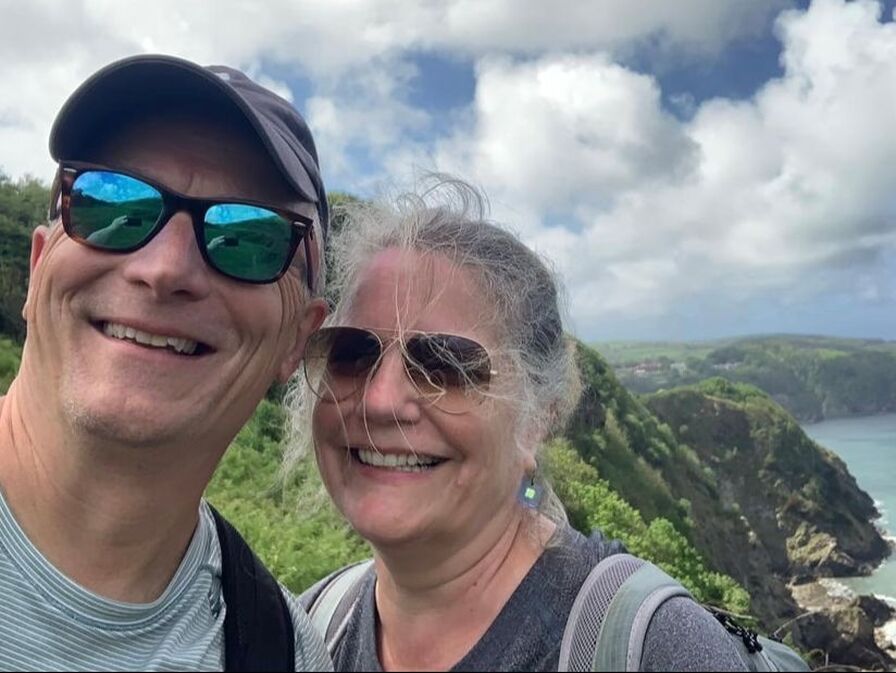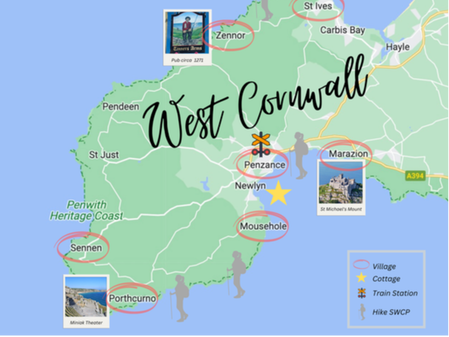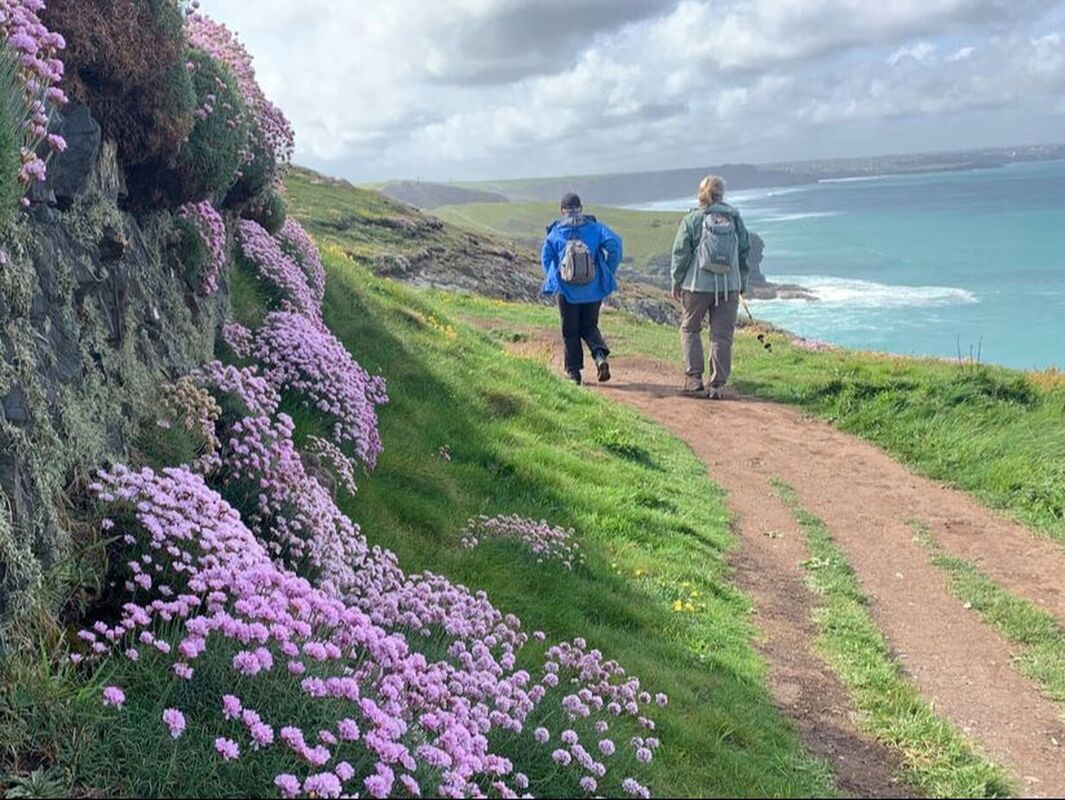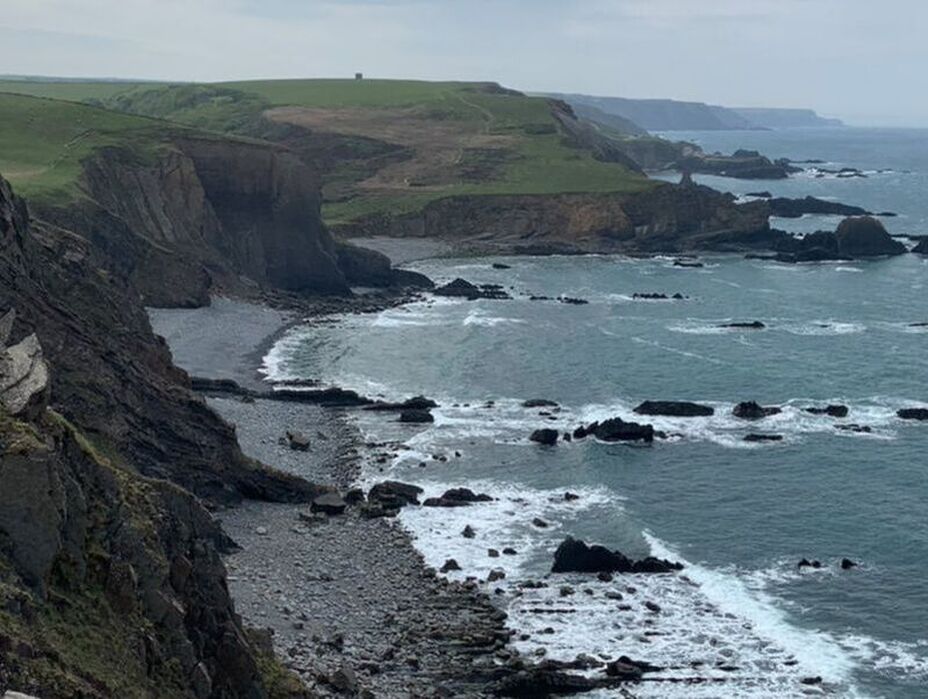Heart-stopping, breathtaking scenery.
Hidden villages.
Coastal silence.
Ancient pubs.
Crumbling castles.
History galore.
Wild seas and roaring waves.
About: Who, Why, HowI'm Chris, my husband is Bob, and we adore everything about England. Well, not blood pudding. Oh, and not the public toilets in Mevagissey, which are frightful. But just about everything else.
Betsy' Trip Fall 2023A specially designed trip to some of my favorite places: tiny villages; spectacular hikes on the SWCP; ancient castle; Miniak; Geever Tin Mine; Telegraph Museum; and age-old pubs.
|
South West Coast PathThe SWCP is a 630-mile trail that takes you around the entire southwest peninsula of the UK, going from Minehead in the north to Poole in the south and carving around a particularly rugged and spectacularly beautiful section of the UK.
May 2024 PlansThis trip is still in the planning stages, not sure how many of us there will be. Definitely me, definitely Bob! Wild and rugged hikes on the SWCP. 14th-century yeoman's farmhouse. Forrabury Stitches. Tintagel & King Arthur. Ancient pubs.
|



